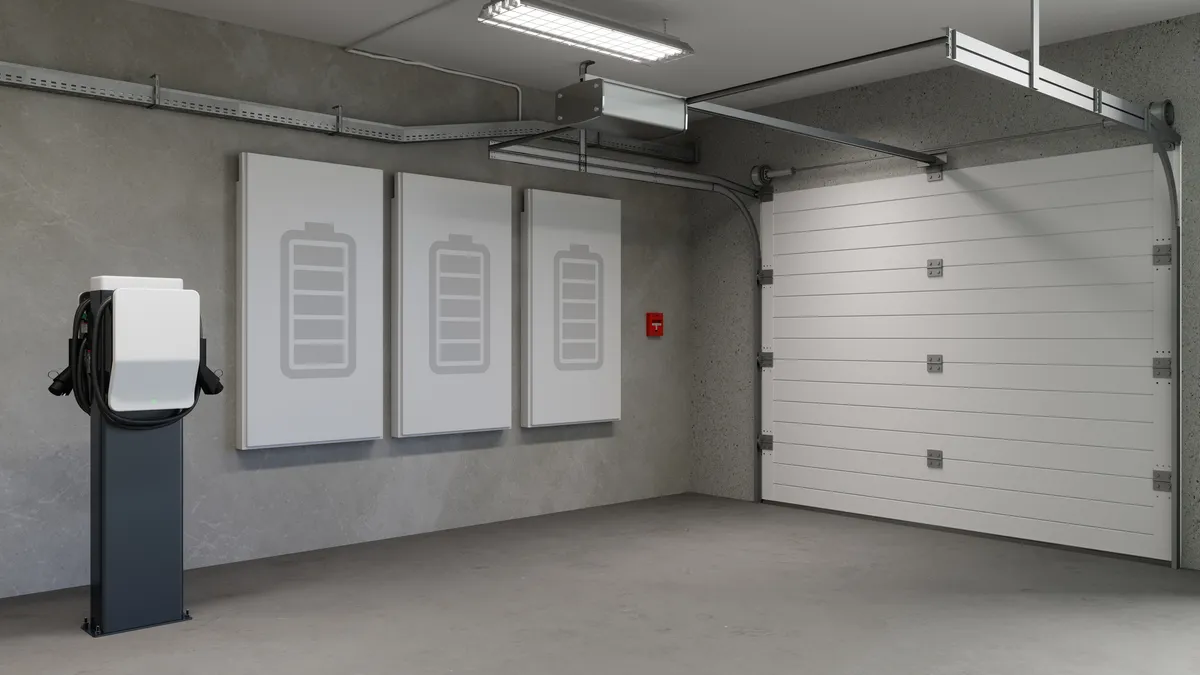Dive Brief:
- New Jersey is proposing upfront and performance-based financial incentives for grid-connected and behind-the-meter energy storage systems beginning next year, the state’s public utility regulator said Nov. 12.
- Modeled after the state’s Successor Solar Incentive program, or SuSI, the New Jersey Storage Incentive Program would benefit privately owned, standalone energy storage installations and solar-plus-storage systems not eligible for storage incentives through SuSI, the New Jersey Board of Public Utilities said.
- The BPU is hosting a virtual stakeholder information session on the proposed incentives Wednesday and will accept public comments through Dec. 18. It expects to launch the grid-connected incentive program early next year and the behind-the-meter incentive program in 2026, according to a public notice.
Dive Insight:
New Jersey has a statutory mandate for 2 GW of installed energy storage capacity by 2030, a key prong of the state’s broader goal to source 100% clean energy by 2035. New Jersey Gov. Phil Murphy, D, signed an executive order last year moving up the clean energy target date from 2050.
The BPU “proposes to interpret the [2030 storage mandate] as requiring New Jersey to procure 2,000 MW of storage systems capable of four hours of continuous discharge, or 8,000 MWh,” it said in the public notice.
For the purposes of counting toward the 2030 mandate, the BPU said it would derate the nameplate capacity of any storage system designed for a shorter discharge duration to reflect its maximum potential discharge rate over a four-hour period. For example, a 10-MW/20-MWh system designed for two-hour discharge would have an effective nameplate capacity of 5 MW.
The NJ SIP proposal envisions separate financial incentives for front-of-the-meter “grid supply” and distributed, behind-the-meter energy storage installations placed in service by Dec. 31, 2030, the BPU said.
Front-of-the-meter systems would be eligible for fixed incentive payments awarded annually through a competitive bidding process. In the future, front-of-the-meter systems could also be eligible for performance payments based on avoided greenhouse gas emissions if reliable day-ahead emissions data becomes available for generation assets in the PJM Interconnection, the BPU said.
Distributed systems would be eligible for annual fixed incentives through block grants and for performance incentives awarded by their electric distribution companies for successful reductions in on-site load or exports to the local power grid during periods of peak demand, the BPU said.
Distributed systems enrolled in the first incentive block could be eligible for an initial incentive of $150/kW to $300/kW in combined upfront and performance payments, depending on system size. Systems sited in “overburdened communities” characterized by relatively high rates of poverty, residents of color or residents with limited English proficiency would be eligible for an additional upfront incentive of $50/kW to $100/kW, depending on system size, BPU said.
The performance mechanism for calling distributed storage systems into service could take up to a year to develop following the debut of the grid supply incentive program, hence the expected 2026 launch date, the BPU said. The distributed-system incentive program would be modeled after the ConnectedSolutions program in Massachusetts and Connecticut, with the key difference that New Jersey electric distribution utilities will be permitted to set their own call hours and payments, the BPU said.
Eligibility for SIP incentives would not preclude energy storage system owners from earning revenue from the wholesale electricity market, participating in distributed energy resource aggregation services or using behind-the-meter assets “to actively manage their electricity usage at the distribution level and reduce electricity cost,” the BPU said.
Correction: A previous version of this story had an incorrect unit of measurement for New Jersey’s proposed energy storage incentive. It is $400/kWh













